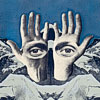as somebody (doubler?) mentioned its kinda messed up to call one game\movie art and not the other because its subjective and because one might not percieve the "art" in one instance although its definetly there.
I found an artical on the web which phrases it nicly:
"Self-expression is probably the most universally accepted characteristic of the fine arts. When Henri de Toulouse-Lautrec vibrantly depicted the seedier underground nightlife of music halls, cabarets, brothels (or more specifically the infamous Moulin Rouge) in Montmartre, Paris in the 1890s, he was giving his audience a voyeuristic glimpse of places where he "hung out." In doing so, he was letting people know how he viewed his own social status and the types of people he associated with.
The public and videogame creators themselves (more commonly referred to as developers) haven't fully embraced the idea that people making videogames should be considered artists, but that hasn't stopped several well-known developers from expressing themselves through their videogames. Shigeru Miyamoto�the Walt Disney of videogames responsible for classics such as Donkey Kong and Super Mario Bros.�shas often said that his ideas for games are derived from his most memorable childhood experiences growing up around the rural countryside near Kyoto. Games like The Legend Of Zelda are a reflection of his youthful adventures hiking and exploring the rice fields, river banks, and hills without a map. Miyamoto wanted gamers to feel the same thrill and wonderthat he had experienced when he discovered a pond in the fields or explored a dark cave. The childlike innocence of Miyamoto's games is worlds apart from Toulouse-Lautrec's sexual iconography, but both developer and painter are wonderfully effective and descriptive in communicating how their environments influenced their personalities and perception of the world."
---
"The ultra popular Metal Gear videogame series is not only remarkable for its intense stealth action gameplay, but also because it creator, Hideo Kojima, has used the games to raise issues relevant to our society. In Metal Gear Solid 2: Sons Of Liberty for the PlayStation 2, the storyline meditates on how the digital age could jeopardize our personal freedoms and the importance of fighting for our identity and history in a global community filled with those who wish to deprive us of it. In the climax of the game, set in New York City's financial district, Kojima redefines our understanding of the statue of Washington that stands on Wall Street. By associating the monument with the plight of his characters, he gives the statue a new historical context and turns it into an icon for overcoming the dangers of tomorrow. The messages in Sons Of Liberty, which predated the 9/11 terrorist attacks, are ironically and frighteningly prophetic in the aftermath of the attacks and with the current conflict against Iraq. Picasso and Kojima used their respective creative mediums to voice their views on war and contemporary issues in hopes of changing people's outlook on the subject. The difference is that one used a canvas and the other used a PlayStation."
---
"In addition to self-expression and changing the way we look at the world, art sometimes is pure visual form and beauty. Wassily Kandinsky's abstract artworks were vastly different from Toulouse-Lautrec's documentations of the Moulin Rouge and Guernica's symbolism in that his paintings were the non-objective realizations of his intuitive sense of sight, sound, and spirituality. Being a musician gave Kandinsky a unique perspective on the visual arts, which he strove to express with paintings that had the same psychological effects of music. There was no deeper meaning to the organic shapes, bold strokes, and splashes of vital colors that comprised his compositions; one simply feels the art.
Tetsuya Mizuguchi and his team of developers are unique from their peer groups in that they are boldly named United Game Artists (UGA) and their title, Rez, is the first videogame to be conceptually and functionally influenced by modern art, and the works of Kandinsky in particular. Although the packaging and instructional manual say the story is about a hacker, like the most revered paintings of Kandinsky, the subject of Rez is non-representational and non-objective. Players engage in a new age version of the sci-fi arcade classic Space Harrier by flying through a world stripped of any sense of reality. Pure vector based lines form landscapes; non-descript polygonal geometric shapes make up much of the targets; and explosions often result in psychedelic flashes of color. The near indescribable on-screen composition is unlike anything ever seen in videogames and must be personally witnessed to be truly appreciated. Rez also fulfills Kandinsky's vision of blending sound and sight by integrating techno dance music with the visuals and gameplay for a true interactive multimedia experience. The difference between Kandinsky and UGA is that the former rendered forms from nature while the latter drew their imagery from computer technology."
ok long post i know but it explaines it nicly. btw REZ is a great game






















